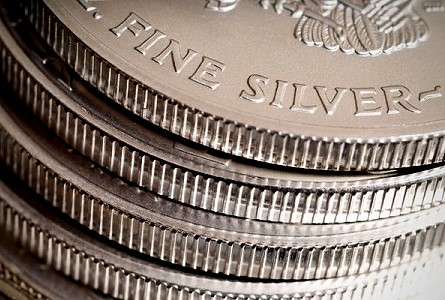Patrick Heller of Coin Week took note of this unbelievable increase in the commercials' silver shorts we reported, and published the following piece expanding upon this and discussing the absolutely BLATANT suppression of silver.
On January 17, the spot price of silver closed on the COMEX at $30.11. Yesterday, it closed at $33.70, an increase of 11.9%! Most people would take that as a sign of a strong silver market. However, the silver market is really much stronger than that relative price change.
 In the COMEX weekly Commitment of Traders Report as of January 17 (which was reported on January 20), Commercial traders had a net short position on the COMEX of 20,382 contracts. At 5,000 ounces per contract, that means that Commercial traders, which are primarily the bullion banks who are trading partners of the US government, had a short position of 101,910,000 ounces on January 17.
In the COMEX weekly Commitment of Traders Report as of January 17 (which was reported on January 20), Commercial traders had a net short position on the COMEX of 20,382 contracts. At 5,000 ounces per contract, that means that Commercial traders, which are primarily the bullion banks who are trading partners of the US government, had a short position of 101,910,000 ounces on January 17.In the Commitment of Traders Report as of February 7, which was released on February 10, the Commercial traders net short position had increased by 14,268 contracts from January 17. As of February 7, the Commercial traders were net short 34,650 contracts, or 173,250,000 ounces!
In other words, the Commercial traders shorted the market by 71,340,000 ounces of silver on the COMEX from January 17 to February 7, increasing their net short position by 70%! The 71 million ounce increase in the short silver position is equal to about 10% of annual worldwide new silver mining supplies!
Normally, the selling of 71 million ounces of silver in a period of three weeks would cause the price of silver to plummet! How much higher would the price of silver have jumped January 17 if this increase of “paper silver” supply had never occurred?
But this short selling wasn’t the only recent blatant tactic to suppress silver prices. At the beginning of February, 1- and 2-month silver lease rates turned negative. Over this past weekend, 3-month silver lease rates turned negative. So, not only do borrowers of silver not have to pay any interest to do so, they will actually be paid a fee by the lender. Obviously, lenders are not making a profit when lease rates are negative. Negative lease rates send a signal to the market that there is so much of the physical commodity available that it should be worth less than its current price level. Therefore, the price of silver should have been declining in the past two weeks rather than treading water.
Read more: